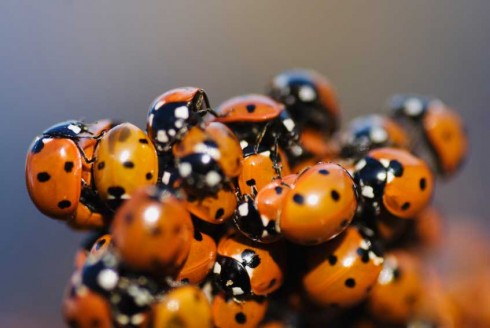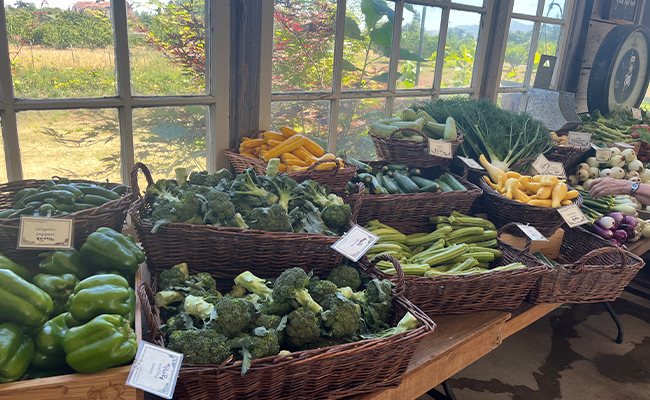Nature’s Way to Keep Aphids at Bay
Life on the farm is not always as rosy, calm or as pastoral as it may appear when one’s farm is certified organic. Behind the scenes–beneath the soil, between the rows and betwixt the leaves– battles can rage and casualties can mount, resulting in damage or even total loss of crops.
Solutions can be complicated and are never as immediate as those inputs used by conventional growers; we have to find ways to keep systems in balance, and re-balance them when the scale tips. In a late-season effort to crush an uprising of aphids in our Willows fields, we turned to a natural biological control for help.
Since late August, we’ve released about 350,000 Hippodamia convergens, commonly known as convergent lady beetles, one of about 400 species of ladybug worldwide. Their cheery and benign appearance belies their voracious appetite for aphids from the moment they hatch. The familiar red wings with black spots also warn birds and other predators that these insects taste terrible due to a substance they secrete when threatened.
Within 10 days of release, each adult female ladybug (roughly 80% of a normal population) may lay 200 to 300 eggs over the next several months on the undersides of aphid-infested leaves. In less than a week, the larvae will emerge as soft-bodied yet strangely reptilian-looking creatures that will devour scores of aphids each day. After a few weeks of this gorging, they will pupate, and adults will soon emerge.
Under ideal conditions, many generations may be produced in a season. With each adult ladybug eating about 20 aphids a day and the larvae consuming 50, and several generations all noshing at once, we hope they’ll help us win the battle. Next in the crosshairs are the innocuous-looking white butterflies fluttering about and wreaking havoc as their offspring hatch into cabbage-chomping caterpillars.
We may not have a solution until next year, when we’ve have had a chance to fill our hedgerows with plants that provide specific habitat for the naturally-occurring wasp that is its nemesis. Nature is patient; we aspire to emulate her, in this as in many other of her wise ways.



Leave a Reply